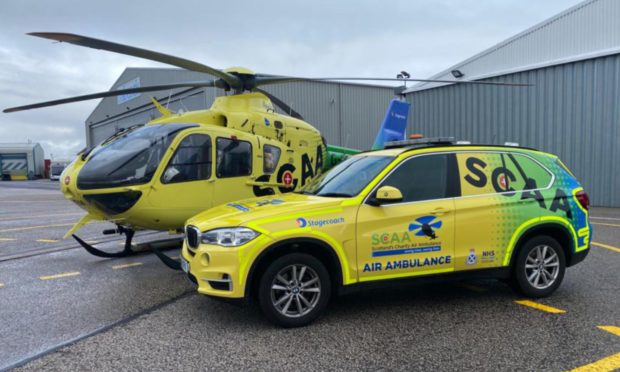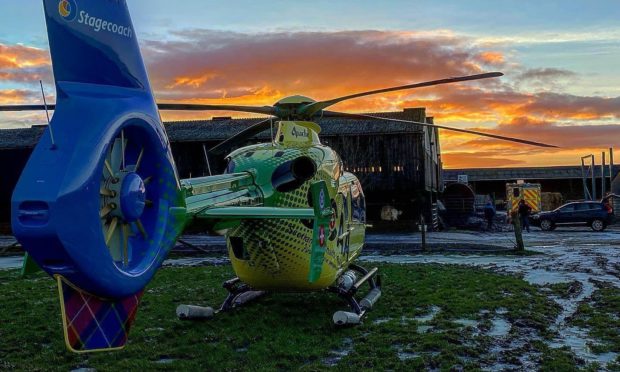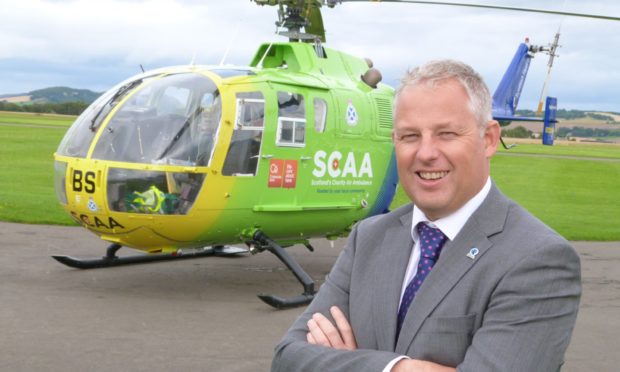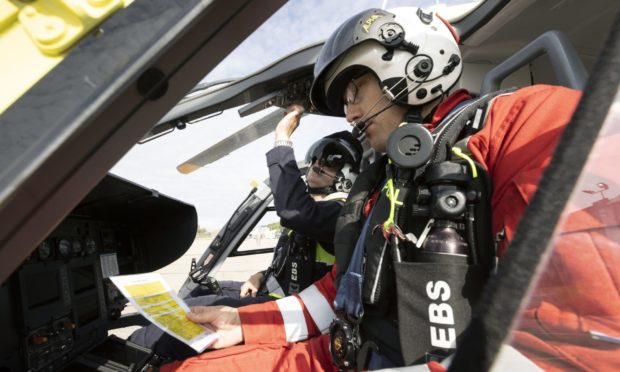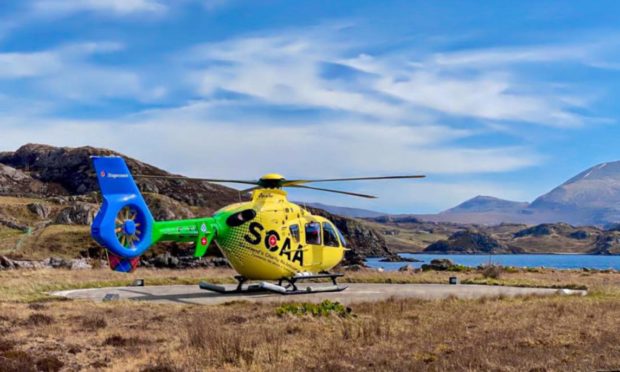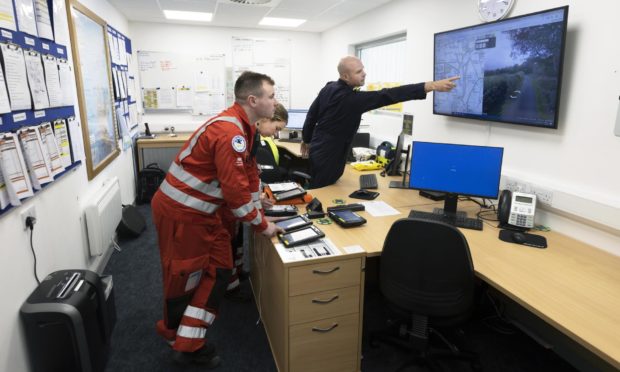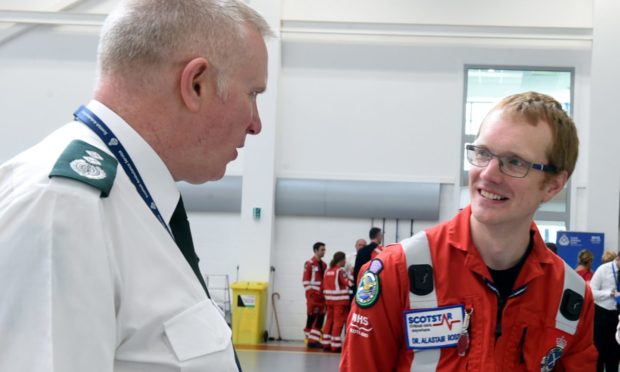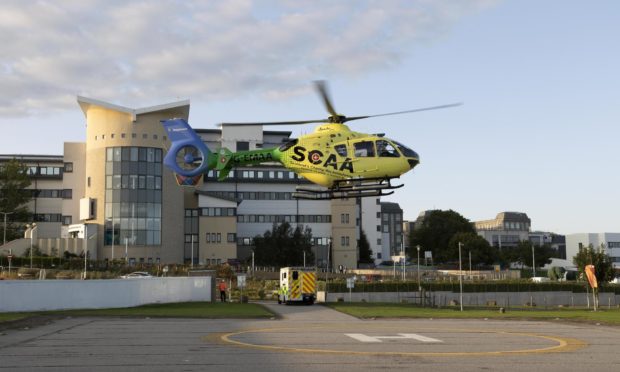Paramedics working for Scotland’s Charity Air Ambulance believe a new rapid response vehicle, launched at New Year, has already proven its worth.
The BMW X5, kitted out with the latest lifesaving equipment, has been used on about 10 rescues in the north-east since January 1 – among them crashes and cardiac episodes.
Scaa’s paramedics can indicate to Scottish Ambulance Service control when they are available to deal with road calls, enabling the dedicated crew to help people even if the helicopter is grounded.
Purely a secondary resource, it is used on relief days for the crew – shifts where they are not expected to fly at all.
On top of that, it allows control room staff to call upon them for serious trauma or medical emergencies if there is work being carried out on the copter or weather has kept them out the air.
It is used for jobs within about six miles of the charity’s Dyce base and can carry a single paramedic to the scene.
In these cases it is used as a first response, rather than taking casualties to hospital.
Paramedic Rich Forte told The P&J: “We tend to respond to the immediately life-threatening calls: heart attacks, cardiac arrests, those sorts of things.
“It has been busy when we have been on as relief staff, with three or four calls on each of the first couple of days we were on.
“It gives us a bit of resilience if the aircraft is offline for any reason and reduces the time we are sitting about unavailable.
“Even if not directly lifesaving at all jobs, getting one of us on scene more quickly than a road ambulance to deliver pain relief leaves a patient in a lot less discomfort and removes pressure from the road crew.
“And we have a couple of advanced pain relief options the guys in the road ambulances don’t, as well as an Auto Pulse mechanical CPR device.”
One of only two in Aberdeen, the machine frees up the hands of a first responder by automatically performing compressions for them.
Team lead Ewan Littlejohn added: “The other is on the divisional rapid response vehicle (RRV) in the south of Aberdeen and we carry ours.
“It’s an excellent asset to have north of the city.”
Mr Forte added: “If we go to a cardiac arrest, where there is any sort of prolonged time doing CPR, we can put it on and it performs compressions for a longer period of better, higher quality CPR for a longer period than a human could do.
“It takes a lot of mental toll away from it and if without it, you might have three people rotating doing CPR, causing fatigue and reduced efficiency of compressions.”
Scotland’s Charity Air Ambulance has made a huge impact since 2013, saving lives and preventing suffering.
That is why the P&J campaigned successfully for Scaa’s second helicopter to be based in our region.
It has now been a year since the aircraft – call sign Helimed 79 – started flying missions from Aberdeen Airport.
But this is an emergency service that relies entirely on donations.
Each call-out costs about £2,500 and SCAA needs P&J readers to help hit its £6million target to cover the cost of its first three years operating in the north-east.
So please do anything you can to raise those funds and show that We’re Backing Helimed 79.
Ways to donate to SCAA
- Website: www.scaa.org.uk/donate
- Text: Text ‘SCAA’ and the amount to 70085
- Phone: 03001231111
- Cheques: Made payable to ‘SCAA’ or ‘Scotland’s Charity Air Ambulance’ and sent to: Scotland’s Charity Air Ambulance (SCAA), The Control Tower, Perth Airport, Scone, PH2 6PL
